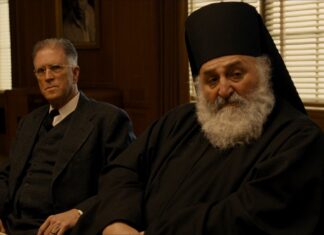By Daphne Abeel
Special to the Mirror-Spectator
This volume is two books in one. On one level, it is the personal story, told as a fictionalized memoir, of the protagonist, Vartan Apelian, a survivor of the Genocide when he was only 2. And then there are the disquisitions on Armenian history that are interposed somewhat awkwardly with Vartan’s story. If the reader is looking for a primer on the history of Armenians from the beginning to the present, this book will satisfy and inform. If the reader is looking for a fully-developed and integrated work of fiction, he or she will be disappointed or, at least, have serious questions about the work’s structure.
This is not the first work of literature to employ a bi-furcated technique. Herman Melville in his greatest novel, Moby Dick, often departed from the fictional narrative to include what are, essentially, essays on whaling, life at sea and various technical matters relating to these subjects. It makes reading this work by Melville something of a challenge, but Moby Dick has survived as one of the most significant literary accomplishments in the canon of American literature.
The question is — does this approach work in Momjian’s work? I would argue that it does not very well, because his method for relating the history of Armenia and Armenians is to set up Vartan’s wife and children as straw men (and women) who pose obvious questions and then listen politely as Vartan delivers his lengthy lecture. This, in purely fictional terms, is simply not a very believable or convincing strategy. In contrast, when Melville departs from his gripping tale of Captain Ahab’s hunt for the great white whale, his knowledge of whaling and the intricacies of the whaling industry are ingeniously related to the thrust of his invented story.
That said, it is possible to admire Momjian’s book, both for its passion and also for the depth of research that enables the author to set forth his historical account. And it is clear that his intention is to review the entire history of the Armenian people, whether this approach works in the context of the entire narrative or not.
On one level, this is the story of a survivor. Vartan is saved from death by his uncle, and his parents are presumed to have died in their house in a fire set by the Turks. He makes his way to the United States in the 1930s where he begins working at menial jobs, but later is able to study landscape architecture and to marry and start a family. A chance meeting with a Turk who was an instrument in his family’s tragedy results in the Turk’s unexpected death by suicide. To some degree, this event in Vartan’s story mirrors the period when Armenians were assassinating Turks in retribution for the Genocide and the reader can entertain some doubt as to whether this particular Turk died of his own volition or was pushed off the balcony by the protagonist.







